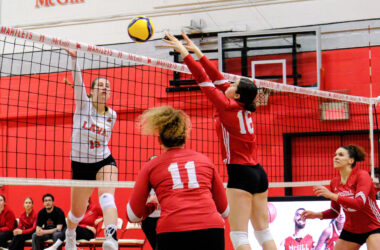Streaking, despite its taboo status, is a popular idea in our collective cultural memory. It’s a common high school and college movie trope to force the loser of a bet to “streak across the quad” or “do a naked lap.” This idea, however, didn’t come from nowhere: The art of stripping down to nothing and dashing as fast as you can has been around for decades.
The true origin of streaking in sports is hotly contested—a cursory glance at online sources will uncover nothing but conflicting accounts. The Guardian cites Michael O’Brien’s sprint across England v. France rugby match at Twickenham for a meagre payout of 10 pounds as the first of several streaking incidents that would plague sports in the years to come. Others, however, cite the University of Georgia as the patient zero of the streaking fad, with several streaking incidents, including a 1,500-person naked dash through campus in the spring of 1974, with some students even parachuting in the nude from above.
Some have even stipulated that streaking’s roots trace back to the 18th century, with reports of Founding Father John Adams’ son running amok across the Harvard Campus without his clothes on.
No matter where streaking claims its roots, it’s undeniable that a golden age of streaking emerged in the ‘70s. Streaking swept college campuses across both the North American and international stage, with sports fans taking to the field in the buff like never before. Streakers would sometimes interrupt gameplay several times a match, and players often felt a need to retaliate. This was the case in a 1977 match between New Zealand and Australia which featured three streakers, the third of whom was promptly spanked with a cricket bat by Australian cricketer Greg Chappell.
Streaking incidents like this haven’t died down—in fact, they’ve only grown more popular. Mark Roberts embodies this reality perfectly: As the self-proclaimed “world’s most prolific streaker,” Roberts has streaked at over five hundred events and has even been paid to streak at high profile events like Super Bowl XXXVIII, where he was ultimately bowled over by Patriots’ linebacker Matt Chatham.
Streaking is a logistical feat. Not only do you need to purchase front row seats to an event, but once you arrive, you need to figure out how to derobe quickly and get on the field before security notices you. After that, you need to run as fast as you can to avoid both security and players with the goal of staying on the field as long as possible—and getting away unscathed. Despite these challenges, people continue to seek out streaking in great numbers, leaving many asking, “Why?”
Are streakers seeking out fame? Are they adrenaline junkies? Or are they just sexual thrill-seekers? While it’s hard to attribute any single motivation to the whole of streaking subculture, Mark Roberts provided some insight in a 2015 interview with The Guardian, explaining that streaking was addictive from the very start.
“It was just infectious. It was the adrenaline I got from that first day. I went crazy [….] I quickly realized that people really enjoyed watching me do this—this crazy mad streaking.”
The rush acquired from pulling off a stunt like this is certainly motivation for some to streak, the cost of interrupting a game and exposing yourself to thousands of spectators is clearly not deterrent enough.
While it’s hard to say why streaking has gripped sports the way it has, it’s probably here to stay—as long as it’s possible to get past security.








